Starting Birth Control Again and Sgot Bv
Medically Reviewed past Traci C. Johnson, MD on May 06, 2020

Start with a few questions: How will you protect confronting STDs? How important are convenience and cost? What about how well it works? Only abstinence is 100% effective, only there are methods that come close if you use them right.

This is a foam, jelly, cream, or flick that goes into the vagina before sex that contains a chemic that kills sperm. Some types must be put in place 30 minutes ahead of time. If you use it oftentimes, information technology can irritate the vagina, making infections and STDs more likely. People usually use other types of birth control with it.
Pros: Easy to use, cheap.
Cons: May make STDs more than probable, and 29% become pregnant during first year of apply.

This new nonhormonal nascency control gel can be used in place of spermicide. A healthy vagina is acidic, just semen (the fluid that has sperm in it) makes it more than alkaline so sperm have a meliorate chance of surviving. Phexxi weakens sperm past helping keep your pH levels low. It comes in 12 prefilled applicators. You can put it in your vagina up to 1 hour before sexual practice.
Pros: Information technology's piece of cake to use and is well-nigh as effective as condoms, and you tin can use it with condoms for more than protection. You tin can also employ information technology with cervical caps and diaphragms.
Cons: Doesn't protect against STDs and may irritate some people. You insurance may not encompass it. The cost without insurance is nigh $250-$275 for 12 doses.
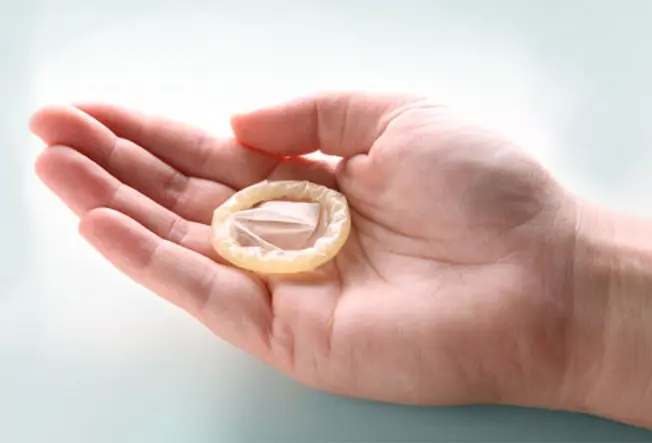
The latex rubber blocks sperm from entering the woman's torso, which protects against pregnancy and some STDs. Of couples who rely on male person condoms only, 15% get pregnant in a twelvemonth.
Pros: Widely available, protects confronting some STDs, inexpensive.
Cons: Effective just if used correctly every time. Tin can't be reused.
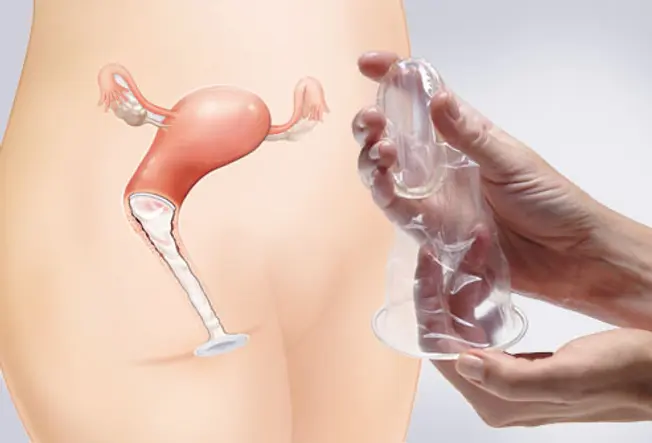
This is a sparse plastic pouch that lines the vagina. A adult female tin can put it in place upwardly to 8 hours before sex. To practise that, they would grasp a flexible plastic band at the closed cease and guide it into position. Information technology doesn't work equally well as the male safety.
Pros: Widely available, offers some protection against STDs.
Cons: Can exist noisy, 21% of users get meaning, and not reusable. Should not be used with a male person condom to avoid breakage.
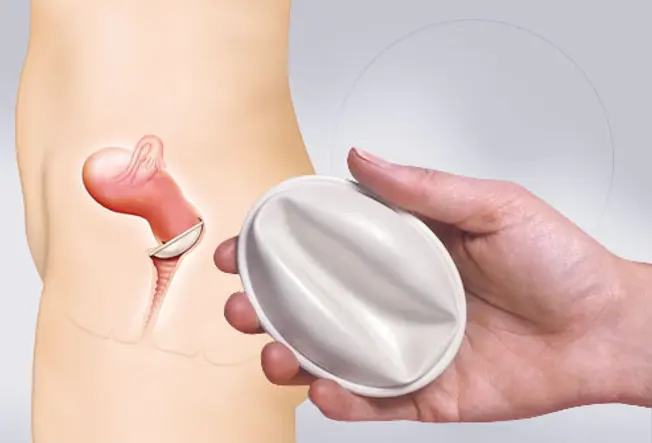
This is a safety dome that women place over their neck before sex. You should also use a spermicide. Of 100 women who use it, 16 get pregnant in a typical year.
Pros: Inexpensive (a $fifteen-$75 device lasts 2 years).
Cons: Must exist fitted by a dr.. No STD protection. Tin can't be used during your period due to a hazard of toxic shock syndrome.
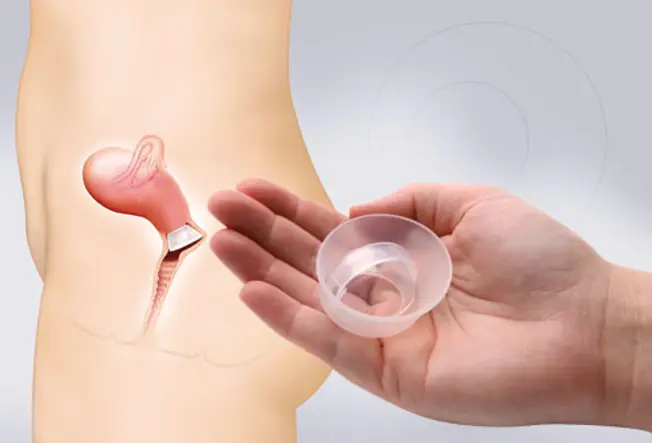
This device, as well chosen the FemCap, is similar to a diaphragm but smaller. It slips into place over the cervix. Y'all use it with spermicide. Most xv% of women who never had children get pregnant when using the cervical cap. About xxx% of women who take had children get pregnant.
Pros: Tin can stay in place for 48 hours, cheap.
Cons: Must be fitted past a doctor. No protection against STDs. You tin't use it during your menses.
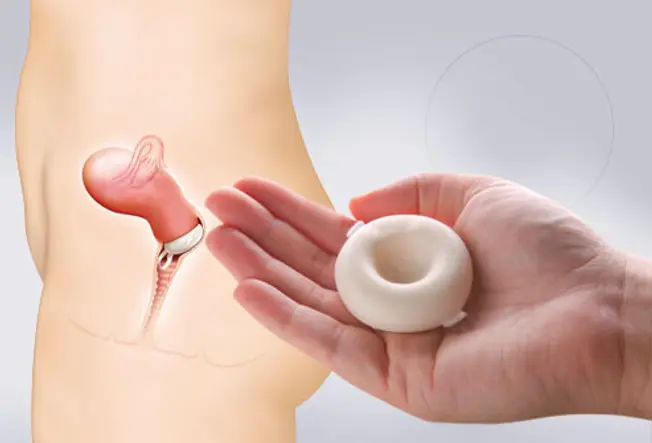
It's made of foam and contains spermicide. Women tin place it confronting their cervix upwards to 24 hours before sex. It prevents pregnancy near besides as the cervical cap. But unlike that product or the diaphragm, you don't need to get fitted by a doctor.
Pros: No prescription, effective immediately.
Cons: Can exist difficult to put in. No STD protection. You tin't use information technology during your menstruation.
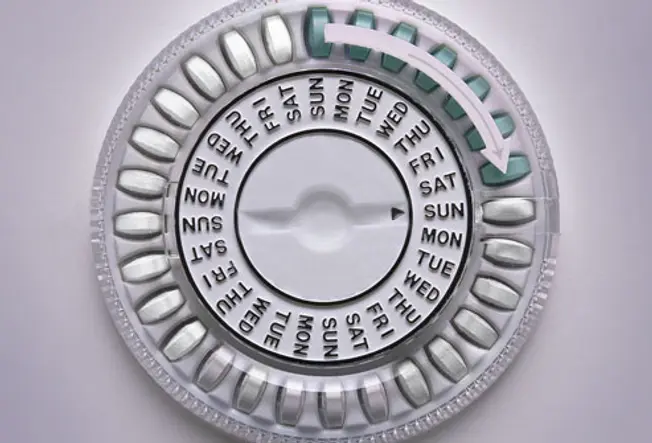
The most common type uses estrogen and progestin to prevent ovulation. It'southward very constructive if taken right. Nearly 8% of women who apply it get pregnant. You'll need a prescription for it.
Pros: Lighter, more regular periods or no periods, depending on the blazon. Less cramping.
Cons: Toll ($0-$fifty per month). No STD protection. May crusade chest tenderness, spotting, blood clots, and raised blood pressure. Some women shouldn't utilize it due to health risks.

Women who forget to accept daily pills may want the Ortha Evra, Twirla or Xulane patch. You wear it on your skin and change it once a week for 3 weeks, then go a week without information technology. It releases the aforementioned hormones in birth control pills and works just likewise.
Pros: Lighter, more regular periods with less cramping. No need to recollect a daily pill.
Cons: Toll ($0-$50 per month). May cause pare irritation or other side effects like to nativity command pills. No STD protection.
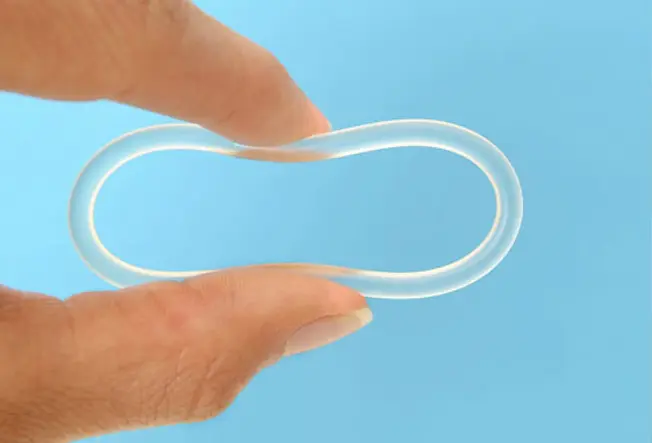
The vaginal ring is a soft plastic ring that goes inside the vagina. It releases the aforementioned hormones every bit the pill and patch, and information technology works just as well to prevent pregnancy. There are two types bachelor: Annovera and NuvaRing. Annovera tin be reused after a 1-week break each calendar month. NuvaRing is replaced each month.
Pros: Lighter, more regular periods. Less-frequent replacement.
Cons: Cost ($30-$fifty per month). May crusade vaginal irritation or other side furnishings like to pills and the patch. Doesn't protect against STDs.

It's called Depo-Provera, and it'south a hormonal shot that protects against pregnancy for three months. For the typical couple, it works better than the nativity control pill. Merely 3% of users get pregnant in a year.
Pros: Injected only 4 times per year, highly effective.
Cons: Price (about $240 per year). May cause spotting and other side furnishings. Doesn't protect against STDs.

Nexplanon is a matchstick-sized rod that a doctor places under the skin of a woman's upper arm. It releases the same hormone that's in the birth command shot. The failure charge per unit is less than 1%.
Pros: Protects against pregnancy for 3 years and then must be removed. Highly effective.
Cons: More expensive up front ($400-$800 for exam, implant, and insertion). May crusade side effects, including irregular bleeding. Doesn't protect against STDs.

That stands for intrauterine device. It'south placed within a woman's uterus. The nonhormonal copper IUD, ParaGard, works for every bit long as x years. The hormonal IUDs must be replaced later three-5 years. Both types make it harder for sperm to fertilize the egg. Fewer than 8 in 1,000 women get pregnant.
Pros: Long-lasting, depression-maintenance. Hormonal IUDs can make periods shorter and lighter.
Cons: Irregular or heavier periods. Copper IUDs tin make periods more than painful. More expensive up front, may sideslip out, may cause side furnishings.
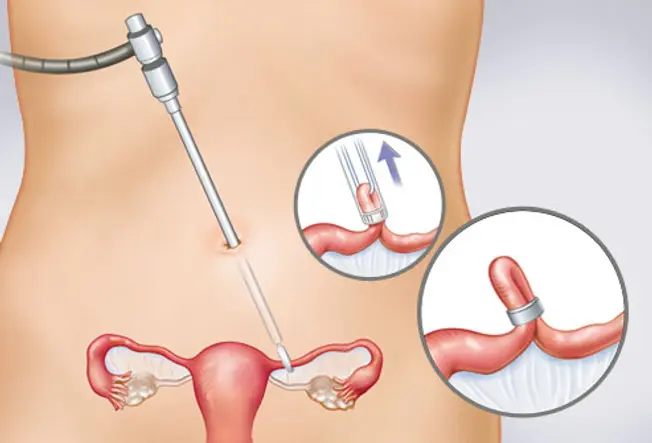
If you're certain you won't desire to become meaning, you lot may be set up for permanent nascency control. The operation for women is called tubal ligation, or "having your tubes tied." A surgeon closes off the fallopian tubes. This prevents eggs from leaving the ovaries. (The banding method is shown here.)
Pros: Permanent, nigh 100% effective.
Cons: Requires surgery, may not be reversible, expensive. Doesn't protect against STDs.

Other than condoms, a vasectomy is the merely nascency control choice for men. A doctor surgically closes the vas deferens, the tube that carries sperm from a testicle. This prevents the release of sperm but doesn't impact ejaculation.
Pros: Permanent, cheaper than tubal ligation, near 100% effective.
Cons: Requires surgery, non effective immediately, may not exist reversible. Doesn't prevent STDs.
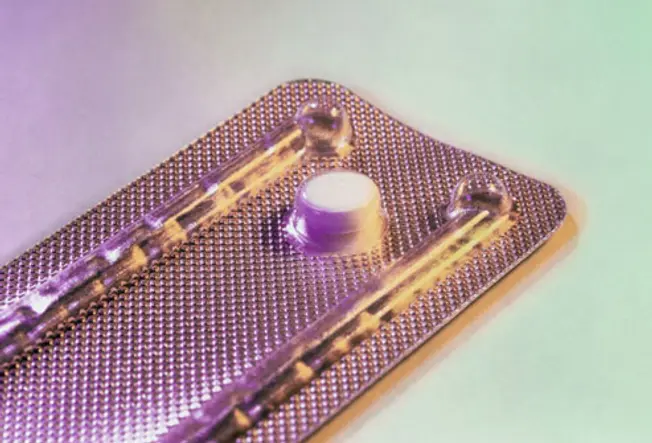
This method works after sex to help avert pregnancy. This is an selection if you lot didn't use contraception or if a woman suspects their usual method failed. At that place are lots of types to choose from, including make-name pills or generic versions. You tin can get some of them over the counter.

If you're over age 35 and smoke or are obese, the combination birth control pill, the patch, and the band are not recommended. Ask your doctor about safe alternatives. If you lot're nearing menopause, the birth control shot has an added benefit: It may salve some of the symptoms of perimenopause.

"Pulling out" is the age-old method that relies on the homo withdrawing their penis from the vagina before ejaculation. If it'southward done correctly every fourth dimension, about iv% of users get pregnant in a year. But with more typical utilize, about 18% get pregnant.
Pros: Free, no need for devices or hormones.
Cons: May be difficult to do correctly. No protection against STDs.
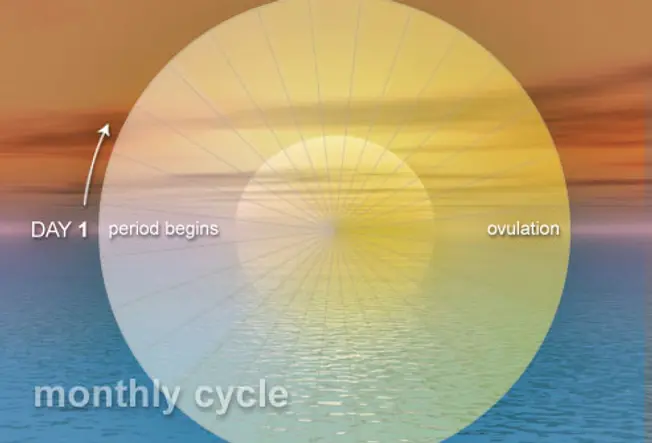
A lot of women who desire to get pregnant employ these to effigy out when they're well-nigh fertile. The kit comes with a urine test that checks how much luteinizing hormone (LH) you have. LH surges 24 to 38 hours before you ovulate, which is when you're most likely to get meaning. To try to prevent pregnancy, don't have sex when you're ovulating.
Pros: No drugs, inexpensive.
Cons: Limits spontaneous sexual activity, and the odds of getting pregnant are high.

Without using whatever course of birth command, 85% of sexually active couples will get pregnant inside a year. Even the least constructive birth command options greatly lower that number.
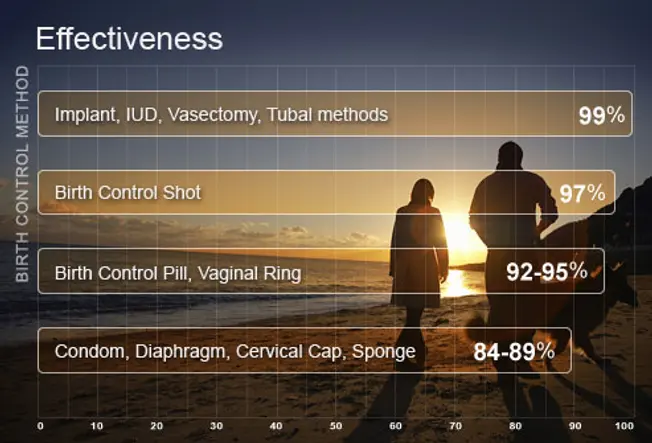
If you don't want to get significant, it really matters how correctly you apply your method of birth control. The most constructive types are those that you don't accept to recall about.
dicksonnotenjoyard.blogspot.com
Source: https://www.webmd.com/sex/birth-control/ss/slideshow-birth-control-options
0 Response to "Starting Birth Control Again and Sgot Bv"
Post a Comment